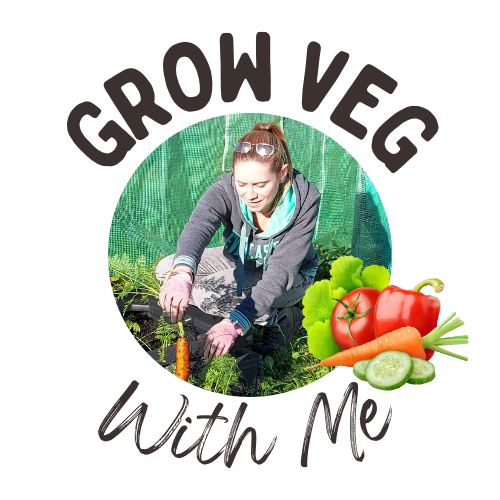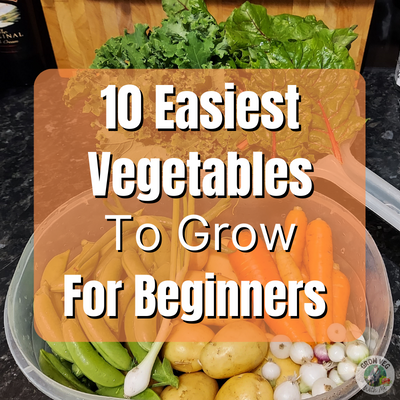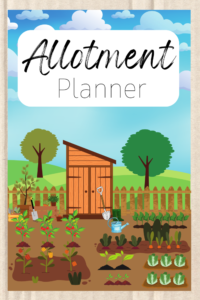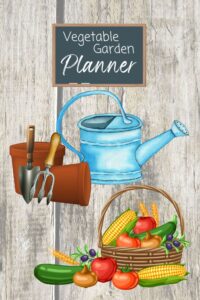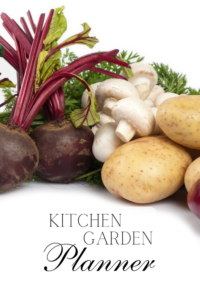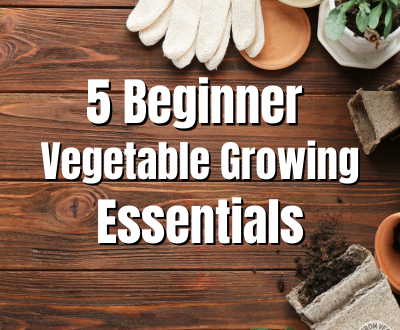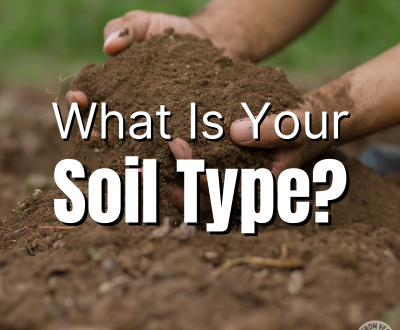It’s definitely a good idea to choose vegetables that are easy to grow and take care of. That’s why I’ve compiled this list of the 10 Easiest Vegetables to Grow for Beginners to help make the decision more straightforward for you. I hope it is helpful!
You may have decided that you want to grow your own vegetables but don’t want to grow anything complicated on your first try.
You may also be interested in my post 5 Beginner Vegetable Growing Essentials.
10 Easiest Vegetables to Grow for Beginners:
Let’s get started!
1. Radishes
Radishes are incredibly easy to grow, but not only that, they grow fast!
Seeds can be sown directly into the ground or your container and then all you need to do is water them regularly before they are ready to harvest.
Pull them up soon after they mature because they will turn ‘woody’ if left in the ground for too long.
Once they germinate, radishes should be ready to harvest in around 28 days
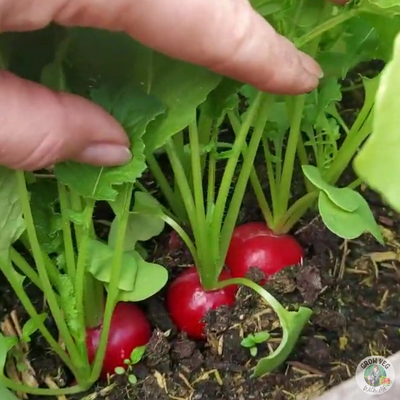
I would recommend for any beginner to grow radishes because you get real results in such a short time and it can really boost your growing confidence.
2. Lettuce
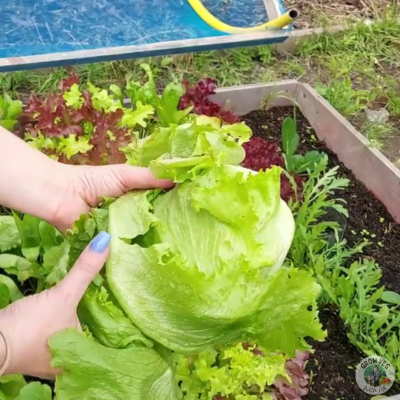
Lettuce is another vegetable that can be directly sown into whichever container or bed you wish to grow it in. There are many different varieties of lettuce, some of which grow very quickly and the leaves can be eaten as soon as they get to a decent size.
Iceberg lettuce is one of the varieties that are best left to grow for longer so that it can properly form its rounded shape (hearting up).
Many types of lettuce can be grown all year round.
If you sow lettuce every month, you can have a constant supply without having to buy it from the supermarket.
3. Spring Onions (Salad Onions)
Spring onions can be grown in a window box, container or in your garden beds. They are easy to look after and can be sown quite close together, making the most of your space.
Once they reach harvest size, you can pick them just as you need them, leaving the rest in the ground for another day.
You can successionally sow spring onions so that you have a year round supply as they can be grown indoors and out, in all seasons.
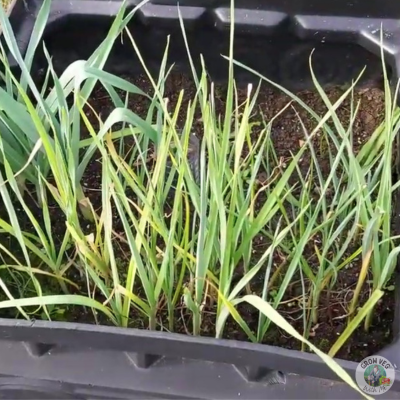
These small onions are much quicker to grow than regular onions and don’t require a lot of care so are great for beginners.
4. Beetroot (Beets)
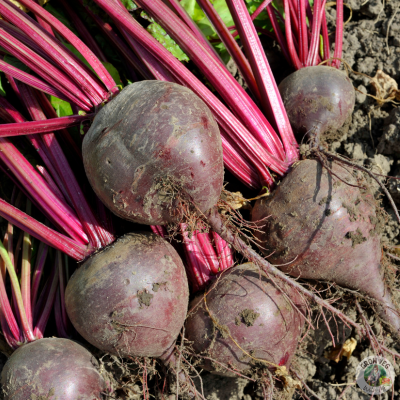
Beetroot is one of my all-time favourite vegetables, but I had no idea that there were so many different types before I started growing my own.
Supermarkets tend to only stock the standard purply-red ones but when you look at seeds for beetroot there are yellow, pink and white striped and white varieties too.
You don’t need to worry about thinning out your seedlings too much because beetroot grow well in groups, just harvest the biggest one first and leave the rest for later and they will continue to grow.
You can direct sow beetroot and it is easy to see when it’s ready to harvest because it is visible above the ground and should be around the size of a golf ball.
I love to pickle my beetroot and eat it in a salad or a sandwich but it also tastes amazing with Shepherd’s Pie!
5. Courgettes (Zucchini)
Corugettes are very easy to grow and they do so pretty quickly. I will warn you that the plants will be on the large side so if you have a small space it may be better to use containers.
Keep an eye out for the flowers – some of them (the female ones) will have a tiny courgette attached which will grow to a decent size quite quickly.
Courgette plants can produce a lot of fruit so you will need to keep checking them for new growth.

Make sure to harvest your courgettes when they get to the size you like otherwise they will continue to grow and turn into marrows!
6. Bush Tomatoes
Home grown tomatoes taste so much better than those you buy in the supermarket and there are so many varieties to choose from.
I would recommend bush tomatoes for beginners because they can be grown in a container and don’t grow to the heights where you would need to support them.
Bush varieties are easy to care for because they don’t need any pruning, just ensure they have enough water and wait for the fruit to grow.
I grew some yellow bush tomatoes (I didn’t plan to but I didn’t read the label properly!) and they were delicious.
Bush tomatoes tend to grow outwards so check the label or seed packet to make sure they won’t be too big for your space. There are lots of varieties to choose from.
If you’re interested in growing tomatoes, I would recommend reading How to Grow Your Own Tomatoes which goes over the whole process.
7. Peas
Peas are so easy to grow and they are another fast growing vegetable. There really isn’t anything like eating peas straight out of the pod. Not only do they taste fantastic but they are packed full of nutrients.
Before growing peas, I would point out that they need some kind of structure to support them.
You can use canes, a trellis or you can buy ready made frames. It is a good idea to use some string to tie your stems to so that they stay upright because the plants will get heavy when they are full of pea pods.
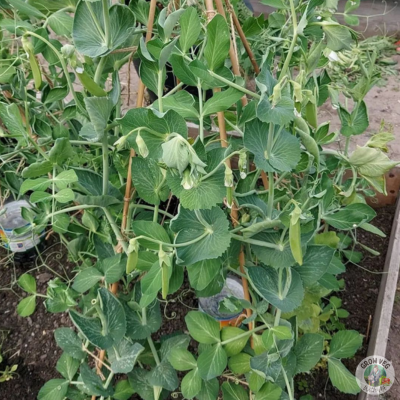
There are plenty of varieties of peas. With some you just eat the peas but with others (like sweet peas) you can eat the whole pod.
Mangetout are grown for the pod only and are tasty in stir fry’s. I would recommend a beginner to choose one variety that you love to eat and stick with that for your first season.
My post How to Grow Your Own Peas may be useful if they make your list.
8. Spinach
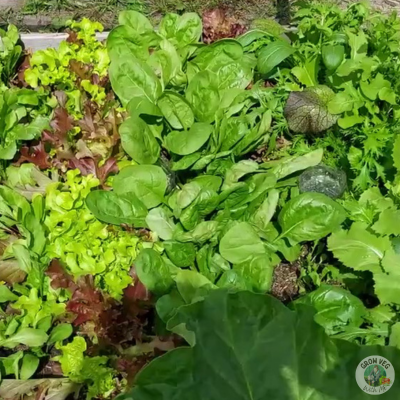
In our house, we love spinach in our salads and we’re lucky that it grows fast and easily.
Spinach can be grown all year round although it doesn’t like very hot weather and will often go to seed (bolt) if the temperatures rise too high.
I love to grow spinach in a bed along with my lettuce and other salad leaves so that I can pick it little and often, all from the same place.
Spinach leaves are most tasty when they are small so it’s best to pick them before they get too big
If you continue to sow spinach throughout the year you should have a constant supply and it will be so much better than pre-packaged bags of spinach going off in your fridge!
Read How to Grow Your Own Salad for more information on this.
9. Carrots
One of the most eaten vegetables (especially in my family) is carrots. The long, orange varieties are what you see mostly in shops but they come in all different shapes and colours.
Carrots are best grown in containers if you are a beginner. They don’t like rough or stony soil and won’t grow long and straight if there are obstructions.
If you use bagged compost you won’t usually have a problem because it is pretty soft and shouldn’t have rocks in it. You can always sift through it and remove any hard bits for the best results.
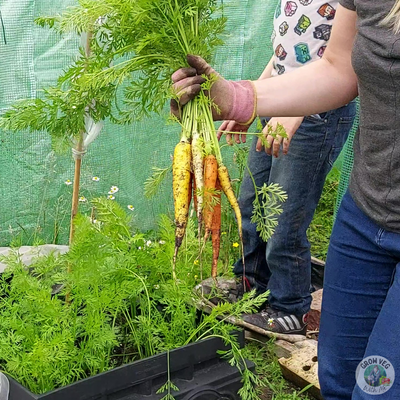
If you don’t use chemicals on your carrots then you don’t need to peel them before eating.
The multicoloured carrots all have slightly different tastes. I wasn’t sure what to expect when I grew them, even though they looked so vibrant. I was shocked at how delicious they were.
10. Potatoes
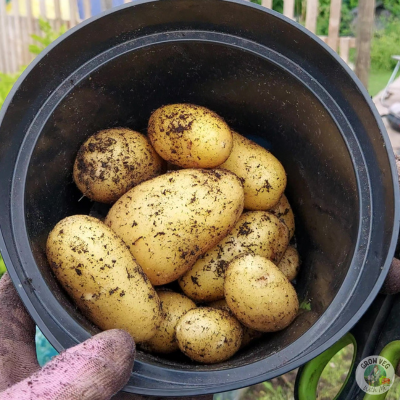
Home grown potatoes are not only easy to grow but they are so exciting, especially if you have kids wanting to get involved in growing veg.
When the plants have died down a little after flowering it should be time to harvest them. Then comes the fun part, where you can dig around for your buried treasure!
You can leave your potatoes in the ground and only dig up what you need so they stay fresh for much longer than shop bought potatoes.
You can grow potatoes in buckets or other containers, even special bags designed for growing plants in.
Container and grow bags will need watering more often than potatoes grown in the ground, especially when the weather is warmer.
I’ve written a whole post on How to Grow Your Own Potatoes for more detail on them.
That’s it for this list – there are other vegetables that are easy to grow for beginners e.g. green beans and cucumbers but I left them out of this post because they are big plants and need more of a structure to help them thrive.
I hope you found this post helpful – if you did please leave me a comment below and visit my instagram page and Youtube channel where you can see more of what I’ve been up to.
This post may contain affiliate links. If you click one and make a purchase, I may receive a small commission. This will be at no additional cost to you. You can read our disclosure policy here.
